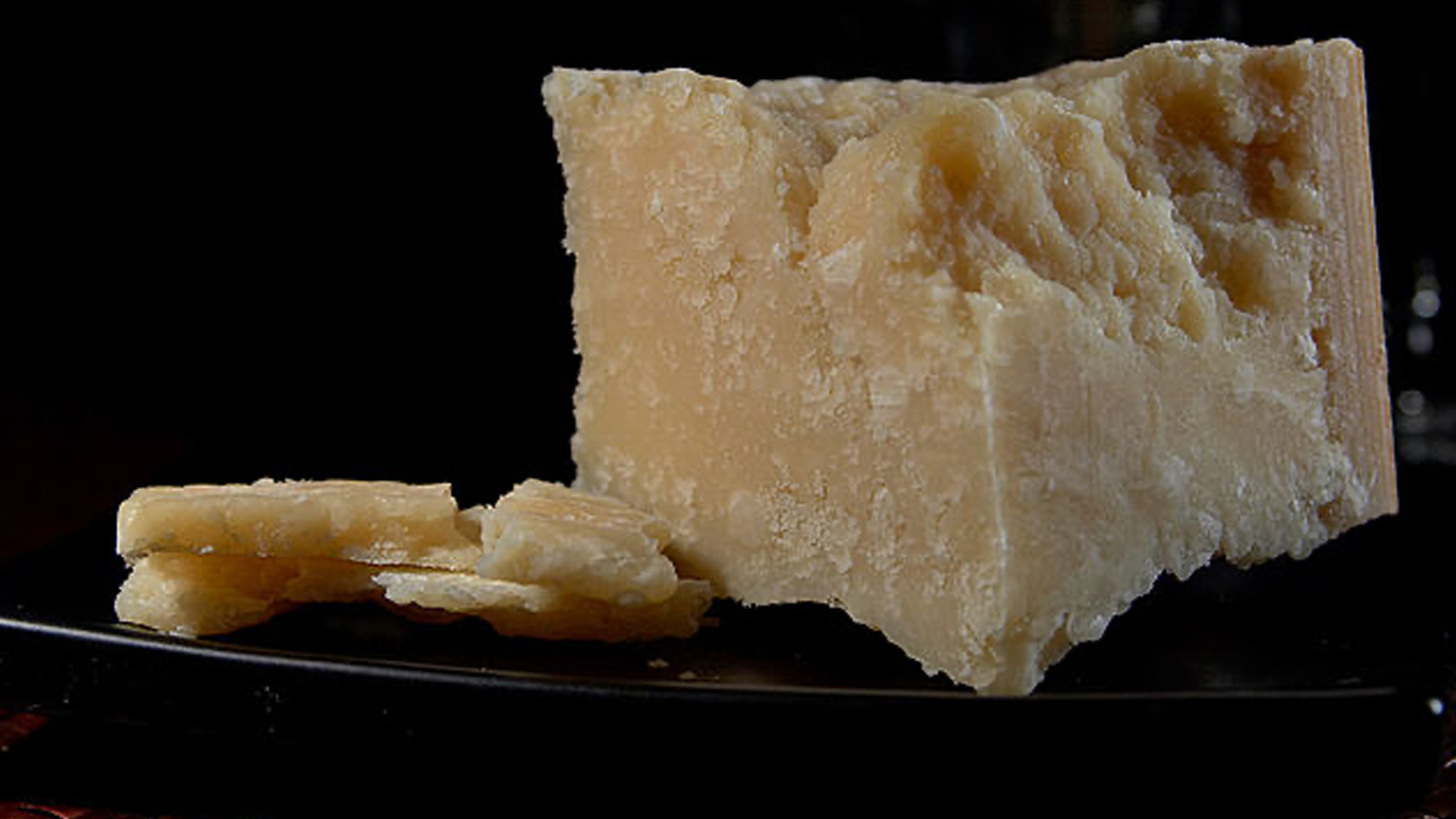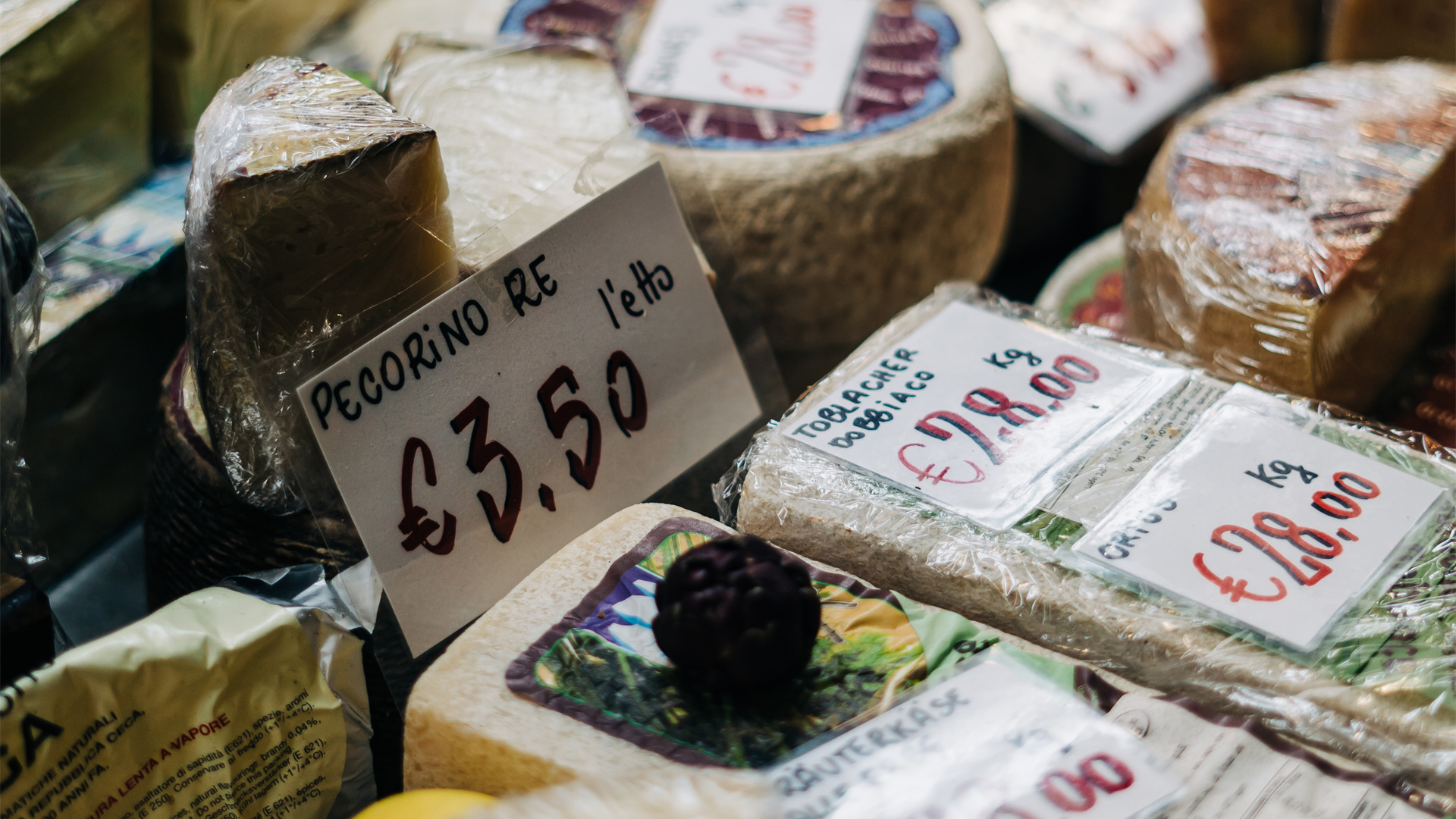A plant-based diet or vegan lifestyle eschews dairy, but that doesn’t mean you have to give up the comfort, depth of flavor, and texture of cheese, especially on your pizza and pasta! Here are three easy DIY non-dairy options inspired by the flavor profiles of Italy’s most beloved Italian cheeses: Parmigiano-Reggiano, Mozzarella, and Ricotta.
Parmigiano-Reggiano
This “King of Italian Cheeses” is named for the two areas of its production; Parma and Reggio-Emilia. Aged for a minimum of 12 months, the milk from Parmigiano-Reggiano comes from cows who eat only hay and grass, and you can taste the sweet, herbal notes expressed in the cheese. Once freshly grated, an excellent Italian Parmigiano offers a nutty, complex flavor with fruit notes. And its grainy texture and mega umami pop of flavor —owing to naturally occurring glutamate (an amino acid in both animal and plant foods that are high in protein) —is a must on pasta.

- The Plant-Based Version: “Nooch Cheese”: Nutritional yeast, also called “nooch,” is a deactivated form of yeast that looks like flakes and contains nutrient-rich protein and vitamins. But the best part of “nooch” is that it has a naturally nutty, cheesy taste. Pair it with glutamate-rich walnuts, a touch of garlic powder, and a bit of salt, and you have one hell of a non-dairy “Parmigiano-Reggiano” topper for your pasta.
- How to Make “Nooch Cheese”: Combine 2/3 cup walnuts, ¼ cup nutritional yeast, ½ teaspoon garlic powder, and ¾ teaspoons salt in a food processor and pulse just until finely crumbled. Store in an air-tight container for up to 2 weeks. Makes ¾ cup.
Mozzarella
Pillows of Mozzarella made from cow’s milk (fior di latte) are mild, slightly tangy, and full of grassy notes. When this cheese is made in Naples, it’s called mozzarella di bufala, after the buffalo milk used in the cheesemaking process, giving this Mozzarella a more tangy flavor. Since Mozzarella is synonymous with Caprese salad, Margherita pizza, and lasagna, what is a non-dairy Italian cheese lover to do?
- The Plant-Based Version: “Cashew Mozzarella”: Store-bought brands of non-dairy “Mozzarella” do a great job of mimicking the texture of Mozzarella and capturing its mildly salty flavor. Try VioLife Shredded Mozzarella, which melts well on a plant-based pizza, or if you’re in the Caprese mood, slice a soft ball of cashew milk-based Miyoko’s Mozzarella. But if you want a culinary adventure, try your hand at homemade Cashew mozzarella by using soaked cashews and tapioca starch —a powdery starch extracted from the root of the cassava plant, often used as a thickener—for stretchy texture.
- How To Make “Cashew Mozzarella”: Soak ½ cup of cashews in warm water for 15 minutes, then drain. Add the cashews to a blender with 1 1/3 cups water, 1 tablespoon of lemon juice (for tang!), 1 tablespoon apple cider vinegar, ½ teaspoon kosher salt, and 4 tablespoons tapioca starch, and blend until smooth. Transfer the mixture to a saucepan set over medium heat, and cook, stirring often, until stretchy and smooth, about 5 minutes. (If clumps form while stirring, lower the heat to low, and continue stirring for about 5 minutes more). Use immediately on pizza, lasagna, or a grilled “Mozzarella” sandwich.
Ricotta
Technically, ricotta, meaning (“re-cooked”), is a by-product of the cheesemaking process, usually by separating the curds and whey when making Mozzarella and reheating the whey curds to create this mild, creamy, and rich milky cheese. It’s essential for stuffed pasta and wonderful for Italian cheesecakes.
- The Plant-Based Version: “Soy Ricotta” Nuts are an essential component of a plant-based or vegan diet. But this plant-based version of classic Italian ricotta uses soy milk to render a creamy, fresh non-dairy cheese replacement for classic savory and sweet recipes. Much like “OG” ricotta, this variation offers neutral flavor with just three ingredients.
- How to Make Soy Ricotta”: Bring 4¼ cups of unsweetened soy milk to boiling in a large, stainless-steel pot. Once boiling, turn off the heat, and add 1 teaspoon kosher salt and 4 tablespoons lemon juice. Stir for 1-2 minutes until the milk starts to curdle. Set the mixture aside to cool for 10 minutes, then transfer to a colander lined with a cheesecloth or clean kitchen towel and drain for 30 minutes to render the creamy, small curd ricotta texture. Use immediately or store in an air-tight container in the refrigerator for up to 2 weeks.
Theresa Gambacorta
Theresa Gambacorta is a writer and cookbook co-author. Her writing has appeared in such titles as La Cucina Italiana, Spin Magazine, Men's Fitness, Muscle and Fitness, and Centennial's special interest publications. She is the co-author of chef Joey Campanaro's Big Love Cooking (Chronicle, 2020), chef Nasim Alikhani's Sofreh (Knopf, 2023), and the forthcoming vegan cookbook, Eat What Elephants Eat by activist Dominick Thompson (Simon Element, 2024).





